
| Aristocracy |
|---|
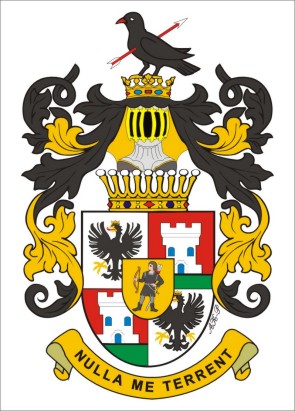
The family comes from Piemont in the Northern Italy. The founder of the Silesian Ballestrems was Giovanni Baptisto Angelo Conte di Ballestrero, who joined the Prussian King's army during the Silesian Wars in the middle of the 18th century. He gained the rank of major. In 1742 (1745) in Prussia he received the title Graf von Balestrem' (Count von Balestrem). He died in 1757 in the Batte of Prague. Thanks to his marriage with Baron's daughter Elisabeth von Stechow, his descendants inherited later the estate of Pławniowice. His sons: Charles Francis (d. 1822) and Louis (d. 1829) received in 1798 the Silesian Inkolat, which allowed them to hold local offices. Moreover, their Count's title was acknowledged in Prussia. The family divided in two main lines, the founders of which were Giovanni's two grandsons: Charles (d. 1879) and Alexander (d. 1881).
|
Palais in Kochcice (part of Polish Film-Cronicle from 1946). |
For Charles' descendants (the elder line), the main estate was the fee tail of Pławniowice, inherited from the Barons von Stechov. The Ballestrems participated in the intense industrial development of the Upper Silesia. In the beginning, the main part of their wealth were land property and mines. Quite late they invested in zinc industry. They chose Charles Godula to manage their zincworks. By participation in the revenue, he soon gained his own fortune. In the second half of the 19th century they changed the management. The Count Charles (d. 1879) changed the establishments into a company, keeping for himself the controlling interest. By creating interdependent companies, they built one of the biggest concerns in the Upper Silesia.
The biggest prominence was gained by Charles' son Francis II (d. 1910), who was also the most known member of the family. After gaining proper financial position, he got involved into politics. As a member of the Catholic Centre Party, he sat in the Prussian Landtag (from 1891) and in the German Reichstag (for the first time in 1893). In the years 1898-1906 he was the President of Reichstag. In 1903, he became the hereditary member of the House of Lords in the Prussian Landtag. This title was connected with ownership of the estate of Pławniowice. He was also a member of the Silesian Provincial Parliament. Moreover, Francis II greatly increased the amount of his property, which on the turn of the XX century he partly gave to his sons to manage. He treated his workers like a strict but just father. He build for them neighbourhoods, casinos and libraries. In Głucholazy, he created a holiday house for them. In 1908, his wealth was estimated at 18 million golden imperial marks. The value of the concern managed by the family was a few times higher.
Francis' II sons founded separate branches of the family: Valentine (d. 1920) of Pławniowice and Szklary Górne, John Baptist (d. 1929) of Cerekwica, Gustav (d. 1909) of Kostów, Leon (d. 1915) of Jagielno, Louis Charles (d. 1957) of Kochcice and Marco (d. 1965) of Puszyna. The line of Valentine's descendants furtherly divided.
The younger line of the Ballestrem family, stemming from Alexander (d. 1881), was not connected to one estate. In the beginning, their property was the estate of Mikolin, and before the Second World War the most important estate was the land around Radomiłów. From Alexander's second son Wolfgang stems the American line of the family, about which little was known until the second half of the XX century. Its representatives live nowadays in the United States.
The period of the Second World War was very tragic for the Ballestrems. In the summer 1942, the Count Sigfrid died in the Eastern Front. Nearly a year later, the Count Johannes died in the Bay of Biscay. The most tragic was the American air raid in Dresden in March 1945. During that, the following family members died: the Count Nicholas - the last owner of the estate of Pławnowice, his nephew Frederic (6 years old) and nieces Monica Rose (5 years old) and Kunegunda (4 years old). Their younger brother, two-year-old Sigfrid, went missing then and was found 19 years later, in 1964 in the German Democratic Republic. Several days after the bombing, Nicholas' younger sister Maria Gabrielis was murdered in Kietrz by the Russians. She was a nun in the Order of Franciscan Missionaries of Mary.
After the war, the Silesian Ballestrems moved mainly to Germany. Some of them emigrated even farther: to Africa, America or the Middle East.
|
Church of Saint Joseph in Ruda Śląska, |
Main-Shaft "Mikołaj" (Nicholas) in Ruda Śląska from 1912 |
- see description of the movie „The Pearl of the Ballestrem Family” (polish: „Perła rodu Ballestremów”) about the castle Pławniowice.
- see Webpage of Ballestremsches Firmen- und Familienarchiv
Top 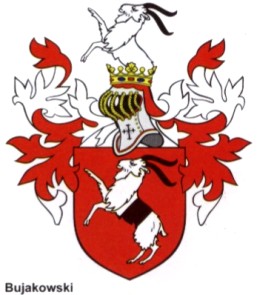
The Bujakowski family is commonly considered to be indigenously Silesian. Their surname appeared in the 16th century. It came from their family abode – Bujaków – a small town near Mikołów. In that area, there are also other families with this surname, but they use different coats of arms.
The family Bujakowski with the "Kozioł" coat of arms, signing themselves "from Knurów", were connected with the lands of Bytom. According to the Czech researcher Joseph Pilnaček, the oldest mentions regarding this family come from 1524 and regard a lieutenant Nicolas. In the end of the 16th century, lieutenants Matthew and Nicolas using the "Kozioł" coat of arms were listed in the Bytomian Landbook.
The most prominent of their descendants was Joachim Bujakowski, who in the middle of the 17th century held a prominent function of Bytomian land-prefect. A holder of that office was a proxy between landlord and his subjects – nobility. In the beginning of the next century, there is a mention in documents about Leopold Bujakowski, who was a member of the Bytomian Land Court.
The side-line that settled down in Morawy in the 17th century gained the most prominent titles. In 1728, they were given the title of Bohemian Barons as "Bojakowsky von Knurow". That line existed there yet in the 19th century.
In the Upper Silesia, John Joseph married Charlotte von Gusnar und Komorno. He died in 1763, leaving the only daughter Marianna, who in 1749, aged 17, married the Count Charles Joseph von Strachwitz from Cieszowa near Lubliniec. The estate that belonged to the Bujakowski family, i.a., Paniowy, was her widow’s dowry. Their most important residence became Kamieniec, bought in 1768. Marianna died in Kamieniec on 29 September 1775 as one of the last representatives of the Upper-Silesian Bujakowski family.
Top 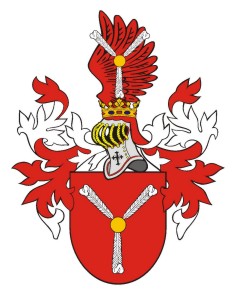
An Austro-Bohemian noble family. According to the legend, their roots date back to the 12th century. In 1524, Leonard (d. 1590), obtained the property of Rohrau, placed in the Lower Austria, which became his descendants' main residence. In 1552, he received the title of Imperial Baron. His grandson Charles (d. 1628) was an Imperial envoy to German sovereigns' courts. In 1627, he received a hereditary Count's title. He had over a dozen children. Two of his sons founded the main two family lines: of Rohrau and of Jilemnice. Charles' son was also Ernest Adalbert (d. 1667), who from 1622 was the Archbishop of Prague. Four years later, he became a Cardinal. In 1665, he became also the Bishop of Trento.
The line of Rohrau was founded by Leonard (d. 1645), the Superior Marshall at the Emperor Ferdinand III Habsburg's court. His descendants' line extinguished upon the Count Anhony's death in 1886. The residence of Rohrau became the property of the line of Jilemnice.
Otto Frederick (d. 1639) was the founder of the younger line of Jilemnice. He was an Imperial soldier and diplomat. He inherited a part of his property from his brother-in-law, Albrecht Wallenstein. His son, Ferdinand Bonaventure I, (d. 1706) bought in 1701 the property of Jilemnice, which became his descendants' main residence. Ferdinand Bonaventure's elder son, Francis Anthony (d. 1727), was the Bishop of Vienna in the years 1702-1706, and from 1709, the Archbishop of Salzburg. His younger son, Aloysius Thomas Raymond (d. 1742), married Cecilia von Thannhausen (d. 1721), whose surname in 1708 was joined with the family's surname. Their descendants took over the title of the Counts von Harrach zu Rohrau und Thannhausen.
Out of Aloysius Thomas Raymons's sons, John Ernest Emmanuel (d. 1739) became the Bishop of Nitra, and Ferdinand Bonaventure II (d. 1778) became the Governor of Milan. Only their eldest brother, Frederick August (d. 1749), had children. He was the Superior Bohemian Chancellor and the Empress Mary Teresa Habsburg's advisor. His two grandsons, Ernest Christopher Joseph (d. 1838) and Ferdinand Joseph (d. 1841) became the founders of the two existant lines of the family.
Ferdinand Joseph's daughter was Augusta (d. 1878), the morganatic wife to the Prussian King Frederick William III (d. 1840). In 1824, she received the title of the Duchess of Legnica and the Countess Hohenzollern (see below). Her elder brother Charles Philip (d. 1878) became a Protestant just like her. He settled down in Silesia, where also his descendants lived. His son Ferdinand (d. 1915) was a well-known painter. He used to paint historical and Biblical scenes, as well as landscapes and portraits.
Top 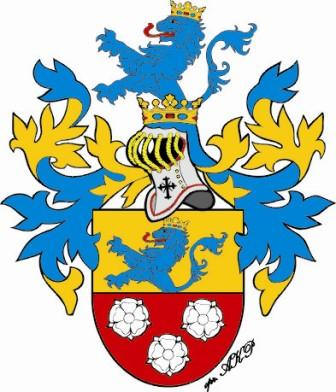
The oldest mentions about the family come from the turn of the 14th and 15th century, and regard Henckel de Quintoforo. On the 1 August 1417, during the Council of Constance, his three sons: Peter, Jacob and Nicolas received together with a few other relatives a common coat of arms from the Hungarian King Sigismund Luxembourg.
At the of the 15th and 16th century, the most prominent representative of the family was John II (1481 - 1539). He was a distinguished humanist. He corresponded with Martin Luther, Erasmus of Rotterdam, Philip Melanchton. He started his career as a parson in Lewocza and Koszyce. Later he stayed at the Hungarian court of Louis II and his wife Mary Habsburg. In 1531 he came to Silesia and became a canon in Wrocław. He was the first Henckel who arrived to Silesia.
The movement of the main family residence from Spis to Silesia was effectuated by Lazarus I Senior (1551 - 1624) and his son Lazarus II Junior (1573 - 1664). During the war with the Turks, they lent large sums of money to the Emperor. The Habsburg was not able to return the money, so in return he bestowed upon his creditors many privileges and various lands as a safeguard. In this way, the Henckels gained, i.a., the state countries of Bytom and Bogumin. Eventually, these lands came under the Henckels’ ruling during the Thirty Years’ War. On 18 December 1636, the Emperor Ferdinand II Habsburg made Lazarus II Junior the Imperial Baron von Donnersmarck in Gföhl and Vesendorf. From Archduke Ferdinand Charles of Tirol, he received on 29 July 1651 in Innsbruck the title of Imperial Count with addition of "highborn and well-born". Ten years later, on 5 March 1661, the Emperor Leopold I Habsburg bestowed upon him the title of Bohemian Count. All these titles were hereditary.
Lazarus’ II descendants in the following centuries divided into a few lines and branches. The Bogumin line stemmed from Elias, Lazarus’ II eldest son. It extinguished in 1803 upon John Erdmann’s death. Leon Ferdynand (1640 - 1699) founded the Bytom and Siemianowice line. After Hugo’s I death in 1890 that line divided. Hugo II (1832 - 1908) founded the line of Brynek and Krowiarki (extinguished in 1993); Lazarus IV (1835 - 1914) founded the line of Nakło and Ramułtowice; Arthur (1836 - 1921) the Karintian line of Wolfsberg. The Gręboszów line stems from Lazarus John Nepomucene (1792 - 1859; Leon Ferdynand’s great-grandson). Charles Maximilian (1642 - 1720, Leon Ferdinand’s younger brother) founded the line of Tarnowskie Góry and Świerklaniec. From his elder son Leon Maximilian (1691 - 1771) stems the Saxon line (extinguished in 1993).
Leon Ferdinand from the Bytomian line was on 14 November 1697 given the title of Free State-Lord (germ. Freier Standesherr) of Bytom by the Emperor Leopold I Habsburg. That title was to be inherited by the first child (primogeniture). Leon Ferdinand’s descendants had also to convert to Roman Catholicism.
After the Silesian Wars (1740-1745), most properties belonging to the Henckels came under the Hohenzollerns’ ruling. The Prussian King Frederick II the Great in his edict issued in 1748 changed the rule of inheriting the title of Free State-Lord, which from that time was to be inherited by the oldest member of the family (seniority rule). In that time, representatives of the Saxon line reached high positions in the army. Gottlob Alexander was a General in the Netherlands, and his younger brother Victor Amadeus was a General-Lieutenant in the Prussian army. He was also granted high distinctions: Medal Pour le Mérite, Red Eagle, and became a member of the Order of St. John.
|
Palais of Count Hugo Henckel von Donnersmarck in Vienna (currently Hotel Radisson SAS Palais) |
In the 19th century, during the period of the Industrial Revolution, great importance and fortune was gained by Hugo I (1811 - 1890) from the Siemianowice and Bytom line, as well as by Charles Lazarus (1772 - 1864) and his son Guido (1830 - 1916) from the line of Tarnowskie Góry and Świerklaniec. Thanks to their activity, the Henckels became one of the richest families in Silesia and Germany. As Alfred Krupp’s and Otto von Bismarck’s friend, Guido had also quite a big political influence. After Alfred Krupp, he was the second richest man in Germany. On 18 January 1901 the German Emperor William II Hohenzollern bestowed upon him the hereditary title of Prussian Prince von Donnersmarck (primogeniture) with the title "His Grace".
As a result of the defeat faced by the Third Reich in 1945, the family Henckel von Donnersmarck lost the whole Silesian fortune. However, their aristocratic position remained unharmed. Charles Joseph (d. 2008, from the line of Nakło and Ramułtowice) in 1958 married Mary Adelaide de Nassau de Bourbon-Parma (d. 2007), daughter of Charlotte, the Great Duchess of Luxembourg. The eldest son of that couple, the Count Andrew (b. 1959) in the summer 1995 married Joanne, the Princess von Hohenberg from a side line of the Habsburg family (great grand-daughter of the Archduke Francis Ferdinand and Sophie, the Countess Chotek, murdered in Sarajevo in 1914).
In 2007, Florian Henckel von Donnersmarck (b. 1973) was granted the Oscar for the movie "The Lives of Others". The Prince Guidotto von Donnersmarck (b. 1940) was granted in December 2007 the title of Honorary Citizen of Tarnowskie Góry in recognition of his family’s merits to the city and region. In September 2009, the Town Council of Świętochłowice named the Mijanka Square in the Katowicka Street after the family Henckel von Donnersmarck.
|
Video on You Tube Journal Interview with Florian Henckel von Donnersmarck (in german). |
Video from You Tube |
- see description of the book about the family Henckel von Donnersmarck.
- see Anna Henckel von Donnersmarck’s webpage .
- genealogy of the family since the 18th century on the page: P. Theroff, An Online Gotha
- genealogy of the family on the page: M. Marek, Genealogy.Eu
- see the webpage of The Fürst Donnersmarck-Foundation 
- You can listen about Family Henckel von Donnersmarck on webside of Radio Katowice (polish)
TopA side line of the Henckel von Donnersmarck. Its founder was Odo Deodatus Tauern (b. 1885, d. 1926), the natural first-born of the Prince Guido von Donnersmarck. According to documents, his mother was Rosalyn Parent, an American with French roots. Researches conducted by Odo Dedatus’ descendants prove that his real mother was a woman from Guido’s close environment.
Odo Deodatus I was an ethnologist. He researched the cultures of the Far East and Indochina. He gained a Ph. D. in natural sciences. In 1914, Odo Deodatus married Mary Berthold. They had one daughter Louise (b. 1916, d. 1948) and three sons: Heimo I (b. 1918), Dankmar (b. 1919) and Reiner (b. 1921). Odo Deodatus I was recognised by Guido as son in a notarial act only in 1915. Odo Deodatus I died in the summer 1926 as a result of an accident – he fell during a climb.
Widowed Mary in 1935 married William Frederick Jenne. She died in 1959. Odo Deodatus’ sons fought in the Second World War. The eldest, Heimo, was a sailor. He died near Murmansk, participating in a reconnaissance flight in the summer 1941. The youngest, Reiner I, died in the Western Front in the last days of the winter 1945.
Dankmar survived the war. After return, he initially settled down in the Eastern Germany, but soon, together with his future wife Christa, got through to the West. They spent many years together in the sea. They had three sons: Odo Deodatus II (b. 1951) , Heimo II (b. 1953) and Reiner II (b. 1962), and two daughters: Cornera (b. 1954) and Merve (b. 1958).
Nowadays, representatives of the Tauern family live mainly in Switzerland and Lichtenstein.
- see webpage of the Tauern family .
- genealogy of the family at the webpage: M. Marek, Genealogy.Eu (the Prince Guido von Donnersmarck’s descendants)
Top 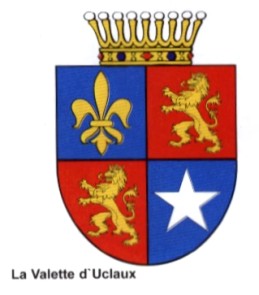
They come from the Southern France. The first known representative of the family was noble Guillaume (William) Jouary d'Uclaux, who lived in the beginning of the 15th century. They were using the second surname "de La Valette" since the marriage of Louis d'Uclaux, (24 August 1654) with Dauphine de Vissec de Latude, the heiress of the estate La Valette.
They enter into the first relationships with Silesian nobility in the half of the 18th century. In 1744, the governor of Languedoc Anthony d'Uclaux de La Valette married the aristocrat from Silesia, Mary Francesca von Sobeck und Kornitz. She was the daughter of the Count Charles Henry, the owner of Koszęcin and Ujazd.
The family de La Valette was also connected with the Bytomian Henckel family. On 21 February 1745, Mary Francesca’s elder sister Leopoldine married Francis Louis Henckel von Donnersmarck. Soon after that, the Count Henckel became the owner of the grange placed near Tarnowskie Góry, named "Dorota", which since then was called Carlshof.
There were more connections between the French counts and Silesia. In 1749, Francis Louis’ younger sister Marianne married the Prussian General Ernest Otto von Gersdorf. On 8 February 1756 their daughter Marianne Albertine Ernestine was born, who later became the Countess de La Valette.
In 1768, Anthony d'Uclaux, senior de Labaume de La Valette et Cailaret, received from the King of France and Navarre Louis XV de Bourbon the hereditary title of French Count.
Anthony and Mary Francesca’s son Charles Bernard Anthony Francis a Paulo was born on 27 April 1748. He married Marianne von Gersdorf on 12 July 1774. He was a nephew of the Countes Leopoldine Henckel von Donnersmarck (de domo Countess von Sobeck und Kornitz), and she was a niece of the Count Francis Louis from Karłuszowiec.
Charles became a Prussian Chamberlain. The Counts de La Valette owned in Silesia the estate of Krampf (in the district of Sprottau), Gwosdzian and Zborowski (in the district of Lubliniec). They had also property in Galicia. On 10 September 1777, Charles and Marianne’s son was born, called Joseph Lazarus Charles Anthony.
Charles and Marianne participated in the social life of the nobility of Tarnowskie Góry and the aristocrats living nearby. In the summer 1788, Tarnowskie Góry were for the first time visited by the Prussian King Frederick William II Hohenzollern. Together with the heir- apparent – the future King Frederick William III - he wanted to see the miracle of the contemporary technology – the fire machine installed in the "Frederic" mine. The royal guide was the Count Frederick William von Reden, the director of the Higher Mining Office in Wrocław. Among the persons welcoming the guests was the Count Charles de La Valette with his wife Marianne, as well as her uncle, the Count Lazarus III Henckel von Donnersmarck from Siemianowice and his wife Antoinette (de domo Countess Praschma).
The Count Charles and the Countess Marianne lived in Karłuszowiec. Up to 1792, the Countess Leopoldine Henckel von Donnersmarck (Marianne’s aunt) was staying there. The family connections surely influenced the choice of Karłuszowiec as the place to stay. It is possible that the French Revolution, which expelled many aristocratic families from France, „helped” in making that decision. However, it is unknown whether the Counts de La Valette d'Uclaux were leaseholders of Karłuszowiec, or only residents, living there thanks to the consent of the Count Lazarus III Henckel von Donnersmarck (he lived with his family in Siemianowice).
On 23 March 1788, Charles gained for himself and his brothers the confirmation of the Count title in Prussia, and in 1795 in Austria.
The Countess Marianne died in the summer 1811. She was buried in the cemetery in Tarnowskie Góry, behind the Gliwice gate. Her tombstone was seen there in the interwar period by the chronicler John Nowak, who put the information about it inside his "Chronicle of the City and District of Tarnowskie Góry…": "At the St. Anne cemetery, a few steps from the Lukasik family's vault, there is a vault covered with an iron plate, in which lies the Countess Mary Anne Duclas de Lavalette, de domo von Gersdorf, b. 8 February 1756, d. 25 July 1811." The Count Charles died on 4 May 1821.
The Count Joseph de La Valette d'Uclaux was a Prussian Rota-master. He married the Baron's daughter Wilhelmina von Saurma-Jeltsch. They had three daughters: Mathilda (b. 1809), Caroline (b. 1818) and Hortensia (b. 1821, after marriage von Rochow). The Countess Wilhelmina died in 1856, the Count Joseph on 22 December 1857. Upon his death, the male line of the family de La Valette d'Uclaux extinguished.
- You can listen about Family de La Valette d'Uclaux on Radio Katowice
Top 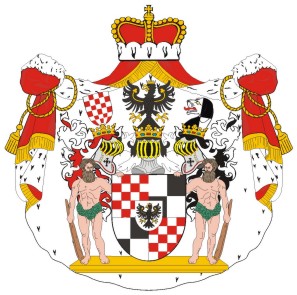
Augusta von Harrach (b. 30 August 1800, d. 5 June 1873 in Bad Homburg v. d. Höhe) came from the old Austro-Bohemian family von Harrach (see about Family von Harrach). She was a daughter to the Count Ferdinand Joseph Harrach of Rohrau (1763-1841) and Christine Rajska (1767-1830). She met the King in 1822 in the city of Teplice in Bohemia, where he was undergoing a medical treatment.
Frederick William's III first wife was Louise the Duchess of Mecklenburg of Strelitz, known for her demeanour during the Napoleonic Wars (she negotiated personally with the Emperor of the French in 1807, when Prussia was endangered with being abolished as a state). She died in 1810, and the King established the Louise-Order (Germ. Louisenorden) in her honour.
The relationship of the 54-year-old King with the Countess 30 years his junior, Catholic and of lower birth, was a problem to him. On 8 November 1824, the King bestowed the titles Duchess of Liegnitz and Countess of Hohenzollern (Germ. Fürstin von Liegnitz und Gräfin von Hohenzollern) upon Augusta. One day later, he married her. The ceremony took place in the chapel in the Charlottenburg Castle. Initially, the relationship was kept secret. The marriage was morganatic, which meant that the possible children could not inherit the father's surname or titles.
At the royal court, the Duchess Augusta's place was only after all the Princes from the Hohenzollern family. She converted to Protestantism on 25 May 1826. The Duchess of Liegnitz lived in Berlin, i.a., in the Schönhausen Castle or in the new wing of the Charlottenburg castle.
The Duchess Augusta did not play any political role. She managed to obtain the King's family's favour in the last years of his life, when she took great care of him. Frederick Wilhelm III died in 1840. Due to protocolar reasons, she was not allowed to participate in the funeral rites in the Berlin Cathedral.
As a Dowager Duchess, she still lived in the palace in Berlin, with a proper salary. Near the entrance to the Sanssouci Park in Potsdam, she build the villa 'Liegnitz,' in accordance with Albrecht Dietrich Schadow's project. She also stayed in Vevey at the Lake Geneva in the villa 'Augusta'.
She travelled a lot, visiting, i.a., Switzerland, Italy (Florence, Rome) and England. She died during her stay in the Bad Homburg residence in 1873. She was buried near the King in the Mausoleum in the park around the Charlottenburg castle.
Początek strony 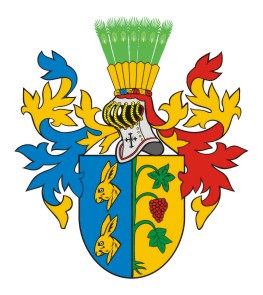
The family comes from Mecklenburg. It divided into two main houses, whose surnames are written differently: Maltzan i Matzahn. They stem from two brothers: Bernd II (d. before 1525) and Ludolf III (d. after 1528). Both families have also different agnomen: the first one used "zu Wartenberg und Penzlin", and the second one "zu Cummerow und Sarow". These agnomens pertained to the most important estates belonging to each of the lines.
The Maltzan family was from the 16th century connected with Silesia. In the years 1530-1571, they were the State Lords of Syców, and from 1590 – of Milicz. In 1530, Joachim III (d. 1556) and his brother George (d. 1562) received the hereditary titles of Bohemian Barons. In the same year, they received the hereditary titles of the Imperial Barons with the agnomen "zu Wartenberg und Penzlin" (Wartenberg being the German name of Syców). In 1539, their titles were accepted by the Prince of Mecklenburg-Schwerin.
In 1694, the owners of Milicz – the Baron Joachim William and his brother Nicolas Andrew received the hereditary titles of Bohemian Counts.
In 1824, the Baron Adolf Christian Maltzan zu Wartenberg und Penzlied received the confirmation of his title in the Polish Kingdom. His last heir was Henry Wandalin, who was murdered by the Warsaw Gestapo in the summer 1943.
Sister of the last owner of Milicz (the Count Joachim, who died during the invasion on France in 1940) was Mary Maltzan (d. 1997), a prominent writer and activist of the German anti-Hitler underground.
Top 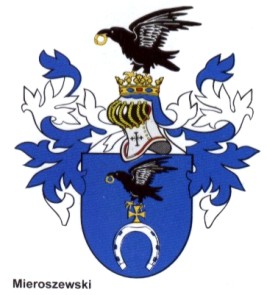
The family Mieroszewski is family with Polish roots, settled down near the borders between Silesia and the Little Poland. Their surname comes from the town of Miroszewice. The founder of the family is considered to be Andrew from Miroszewice, who lived in the 14th century. In the end of the 15th century Nicolas, called "the Devil", married Hedwig Smolicka from Smolice and settled down in Jakubowice in the Upper Silesia. He probably received that village from the Princes of Opole as a donation. Nicolas and Hedwig’s son John, who lived in the beginning of the 15th century, signed himself as the owner of Jakubowice, Michałkowice and Bańgów. In 1558 he held the office of Treasurer in Będzin. His son Christopher was the owner of Michałkowice, Siemianowice and Chropaczów. These villages remained the property of the Mieroszewski family for a few next generations.
Thanks to the marriage with Hedwig Salomon, Christopher gained the rights to the entail of Mysłowice. His brother Adalbert married Hedwig’s niece, Dorota Gosławska. Adalbert’s descendants divided into two lines: noble and entail-holding, called also the Counts' line. The founder of the noble line was Adalbert’s I son Adalbert II. The entail-holding (the Counts') line – owners of Mysłowice - comes from Adalbert’s II brother John II.
In 1692 Stanislas Mieroszewski from the noble line sold his Jakubowice estate together with Siemianowcie and Bańgów to Boguslas Hunter von Grandon (possibly because of continuous argument with citizens of Czeladź concerning the borders of this estate). In 1718 the new owner sold these terrains for 12 thousand thalers to Mary Josephine, the wife of the Free State-Lord of Bytom, the Count Charles Joseph Erdmann Henckel von Donnersmarck.
The Mysłowice estate was turned into the Ordynat-estates (pol. ordynacja) of the Mieroszewski family in 1678 by Christopher II. It consisted of: Mysłowice, Brzęczkowice, Szopienice, Janów, Roździeń, Bogucice i Brzezinka.
John Christopher was twice the owner of Katowice and Kuźnia Bogucicka. First, he owned these estates in 1698. He bought them on 19 August from Charles Bernard Sobeck von Kornitz, and sold them on 18 September to George Holly. He again bough these estates in 1735 from the Promnitz family. His daughter Josephine, Francis Schwellengrebel’s wife became the heiress of this property. The Ordynat-estate of Mysłowice was given to his nephew Joseph.
|
The castle Pieskowa Skała |
In 1798 the Prussian King Frederick William III Hohenzollern bestowed the title of Prussian Count upon Joseph, The Chamberlain to the Polish King Stanislaus August Poniatowski. Joseph was a nephew of two Ordynats: the second one Joseph and the fifth one Felician. The title lost validity upon his death in 1833. In 1869, the Austrian Emperor Francis Joseph I Habsburg bestowed the titles of Austrian Counts upon Sobieslas, the tenth Ordynat of Mysłowice, and upon his brother Stanislaus.
|In 1839, the family Ordynat-estate of Mysłowice was changed into a money Ordynat with the total sum of almost 110 thousand thalers, deposited in mortgage certificates. A percentage of this sum – about 6 thousand thalers – were to be given to the Ordynat annually.
The Mieroszewski family (in 19th century they also used their surname Mieroszowski) moved to the Little Poland. They owned, i.a., the castle in Pieskowa Skała and the town of Chrzanów. The last heir of the entail-holder title was the writer Christopher Emil, Stanislaus’ son, the owner of the Rabka estate. Upon his death in 1915, the count line of the Mieroszewski family extinguished.
- see in Gallery of Mieroszewski Family in Cracow.
- You can listen about Family Mieroszewski on Radio Katowice
Top 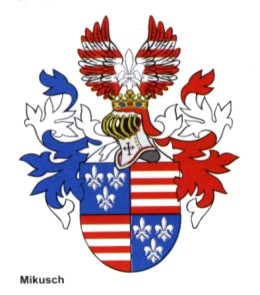
The family came to Silesia from Bohemia in the 17th century. Their estate was in the bishop’s principality of Nysa and in the lands of Bytom. On 27 May 1621, nobility together with the agnomen "von und zu Buchberg" were bestowed upon John Mikusch, the Butler to the Archduke Charles, the Emperor’s Ferdinand II Habsburg’s brother.
His son John Ignatius owned in Silesia, i.a., Łagiewniki and Świętochłowice. He was known for his arguments with his neighbour, the Prefect of Bytom John Paczeński. John’s grandson, John George, in a document dated 5 January 1627 was named as the owner of Łagiewniki and Hajduki. This is the oldest document, in which Hajduki is mentioned. The Mikusch family owned Średnie Łagiewniki and Dolne Hajduki from 1620 up to the beginning of the 19th century. After John George, his eldest son Francis Joseph became the heir of the family estate.
Henry Ignatius was enlisted in the middle of the 17th century with the agnomen "von Buchberg". In the 18th century, the Mikusch family obtained also another noble titles. On 16 August 1707, John Louis was made a Bohemian nobleman (again with the confirmed agnomen "von Buchberg"). Bernard George, an imperial and royal secret financial advisor, received in 1719 the title of Baron, and on 7 April 1721 the title of Bohemian Count. One year later he died in Vienna without leaving any heir to these two titles. There is no data that would allow to state what kinship was between John Louis and Bernard George, and the owners of Łagiewniki and Hajduki.
The Mikusch family remained the owners of the estate in the Bytomian land after the Silesian Wars, when nearly the whole Silesia came under the Prussian Kings’ ruling. In 1751, the owner Łagiewniki and Hajduki was Anthony Ferdinand. In 1776, he bought Dolne Łagiewniki. His son Anthony Louis, the next owner of that estate, died in 1816. These lands were bought from the Mikusch family by Edward Wilhelm Schlabitz in 1847.
Top 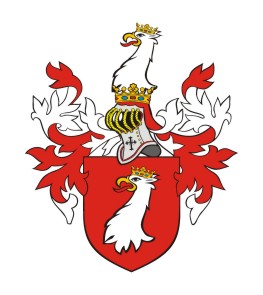
The founder of the Silesian Oppersdorff family was the knight John Rolle from Switzerland. His grandson married the heiress of Głogówek and in this way became the owner of the castle and the lands. In 1554 three brothers John, George I and William received the hereditary titles of Imperial Barons with the agnomen "von Aich und Friedstein".
|
The collegiate church |
The family divided into three lines: Silesian, Moravian and Bohemian. Głogówek was first the property of the Bohemian line. When the line extinguished in 1714, the estate came to the Moravian line, and in 1781, to the Silesian Line. George II and his brother Frederick II in 1601 were made hereditary Bohemian Barons. George III became an Imperial Count in 1622. His brothers Fredrick and Venceslaus received that title over ten years later.
During the war between Poland and Sweden, the owners of Głogówek met with a big honour. In their castle there was the residence of the King John II Casimir, escaping from the Republic of Poland. The monarch was a guest to the Count Francis Eusebius Oppersdorff for some autumn weeks. During the Napoleonic Wars, the Count Francis Joachim Vaclav provided a refuge for the great composer Ludvig van Beethovenowi. The artist dedicated the 4th Symphony called "Eroica" to his protector.
|
Trailer of the movie |
In the Second Republic of Poland, the Count John George Oppersdorff (d. 1948) was known for his warm feelings for Poland. He married the polish Duchess Dorothy Radziwiłł (d. 1947). When the Polish Order of the Knights of Malta came into being, the Count became its member, and his tenure was the longest one. In February 1921, the Duke John Henry XV Hochberg von Pless expelled the Count Oppersdorff from the Silesian Club for his relations with Poland.
John George and Dorothy’s great-grandson Alexander Oppersdorff (b. 1965 in Frankfurt am Main) studied in London Film School. He lived, i.a., in Rome. His first project was a documentary devoted to the American composer with Italian roots Giancarlo Menotti (d. 2007). The movie "Capri, You love?" made in 2006 is his first feature movie.
- genealogy of the family from the 18th century at the page: P. Theroff, An Online Gotha
- genealogy of the family on the page: M. Marek, Genealogy.Eu
Top 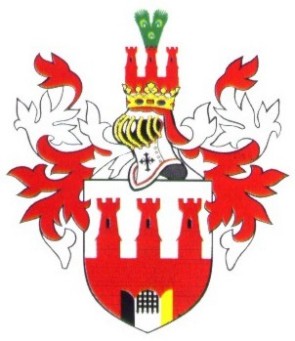
A Silesian family with the roots that reach the 13th century. One of the most prominent representatives of the family was Przecław from Pogorzela (b. 5 May 1299, d. 5 April 1376) the Bishop of Wrocław from 1342. During his long ruling he did a lot for economical development of his lands. In 1344 he bought for the Chapter of Wrocław, the Duchy of Grodków, as well as the lands and the castle of Žulova (Germ. Fredeberg). He bestowed municipal rights upon Otmuchów, and he built walls around Paczków (the town is nowadays known as the Silesian Carcassonne). By the contemporary people Przecław was called Aureus Episcopatus (Golden Bishop).
Representatives of the Pogrel family had their lands in many Silesian principalities, i.a., of Brzeg, Wołów, of Świdnica, of Olesno. John Casper von Pogrel in 1731 became a hereditary Imperial Baron. This title was bestowed upon him by the Emperor Charles VI Habsburg. On 17 June 1744, the Emperor Charles VII Wittelsbach made the Pogrel family the Imperial Counts.
In the Church of St. Apostles Peter and Paul in Tarnowskie Góry was buried in 1556 Ulrich Pogrel von der Igel, the Mining Prefect of the lands of Bytom and Tarnowskie Góry. His tombstone made in the late Gothic style (some historians claim that it’s Early Renaissance style) is still visible in a side wall of the Church.
Top 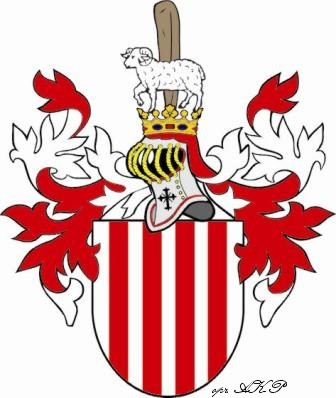
According to the legend, in the 13th century Siboth Schaff, one of the ancestors of the family, received the castle Stara Kamienica from Boleslas the Tollgate, the Duke of Legnica.
The creator of the family’s power was Gotsche II, who in 1399 (or 1400) received the castles Gryf and Chojnik. In recognition of his merits, the next generations of the family used his name as an agnomen, and that’s how the surname Schaffgotsch was created. Three brothers living at the turn of the 15th and 16th century - Anthony, Casper and Ulrich – became the founders of the three main lines of the family. The youngest line (Ulrich’s descendants) extinguished upon Wolf Ulrich’s death in the beginning of 1661.
The main line of Anthony’s descendants extinguished at the turn of the 17th and 18th centuries. Representatives of the side-line (Ernest’s III descendants) settled down in Bohemia. The Bohemian line differs from the others by how the surname is written. The former ones use the surname with the letter "e" at the end.
John Ernest Schaffgotsche received in 1674 the hereditary title of Bohemian Baron, and in 1681 Bohemian Count. Upon his childless death, both titles extinguished. The Count’s younger brother John William was made in 1669 a hereditary Bohemian nobleman. His two sons, Christopher William and John Ernest, in 1703 became hereditary Bohemian Counts.
|
The Chojnik Castle |
Only the younger of the brothers, John Ernest, had children. They entered into relationships with the best families among Bohemian aristocracy, e.g., Kinsky, Waldstein. John Ernest’s grandson John Prokop, since 1780 the Canon of Olomouc, five years later became the first Bishop of the Bohemian city of Budziejowice. He died in spring 1813. The Bishop’s nephew, John Anthony Ernest since 1837 was also the Canon of Olomouc. Two years later he became the titular Bishop and he was assigned a supportive position to the Archbishop of Olomouc. Soon after that, in 1842, he was consecrated as the Bishop of Brno. He died in spring 1870.
In the last generation of the Bohemian Schaffgotsche family, Nicolas died in the beginning of the Second World War, in September 1939. Felix died nearly three years later, in the summer 1942. Felix’s sister Johanna died in 1960. Their younger brother Frederick died in 1993 as the last representative of the Bohemian Schaffgotsche family.
Casper’s grandson Adam in 1592 bought from the last representative of the Kurzbach family the State Country of Żmigród. His cousins: Balthazar, Christopher, Venceslaus and Casper, began to title themselves the Barons of Żmigród. The next State-Lord of Żmigród was Christopher’s son, John Ulrich.
|
Ruins of the Gryf Castle |
Young Hans Ulrich studied in Tübingen, Altdorf and Leipzig. After a customary bachelor’s journey across Europe, He returned to Silesia, where In 1614 he overtook his father’s property. One year later, as the representative of Silesian states, he was an envoy to the royal court in Prague. His wife was Barbara Agnes, a daughter to Joachim Frederick, the Piast Duke of Legnica and Brzeg. As the Duke’s son-in-law, Hans Ulrich became someone definitely more important.
In 1619, he participated in the coronation of the Palatine of Rhine, Frederick V, as the King of Bohemia. However, he soon took the Emperor Ferdinand III Habsburg’s side and served under Wallenship’s command. In 1627, the Emperor bestowed upon him the title Semperfrei (which can be translated as "always free"). Unfortunately, his relationships and connections did not prevent him from getting into trouble. As Wallenstein’s follower and subordinate, he incurred the Emperor’s displeasure. After his leader’s fall, he was arrested in 1634 and executed one year later in Ratisbon upon the Emperor’s order. His property was confiscated and the State of Żmigród came into the Hatzfeldts hands.
The family’s property – except the State of Żmigród – was evicted by Hans Ulrich’s son, Christopher Leopold. After his father’s death, he was raised up by the Jesuits in Ołomuniec. In 1641, he regained the property of Gryfów. After the studies in Ingolstadt, he joined the Emperor’s army. In 1649, the Emperor Ferdinand III named him as a Counselor in the Silesian Supervisory Office. One year later, Christopher Leopold regained the castle of Chojnik. In 1651 he was given the title of Hereditary Chamberlain and Court Judge in the Duchy of Świdnica and Jawor. In 1662, he received the title of Hungarian Baron.
|
The Palace in Czernica |
In 1665, Christopher Leopold became President of the Silesian Chamber and the Prefect of the Duchy of Świdnica and Jawor. Seven years later, the Emperor named him as the Director of the Supervisory Office. He must have been a respectable person as the Queen Mary (John III Sobieski’s wife) was supposed to be his daughter’s godmother. He knew Polish Court, because many times he was an envoy to Poland. However, due to the Emperor’s protest, the Queen was listed only as a witness to the ceremony.
Christopher Leopold was named an Count already in 1654. He died in the summer 1703. His son John Anthony Gotard in 1708 received the title of Imperial Count. Moreover, he was given the rights of Silesian Dukes. At the same time, as a close relative to the extinguished dynasty of Silesian Piasts, he received the privilege of joining the coats of arms belonging to the Schaffgotschs and Dukes of Brzeg and Legnica.
The Schaffgotschs once more incurred their sovereigns displeasure. The Count Philip Gotard studied in Rome at the Jesuits’. In 1738 in Vienna he obtained Church ordinations and the office of Canon in Ołomuniec, Wrocław and Halberstadt.
|
The Castle of Czarne |
After the King of Prussia, Frederick II the Great’s encroachment into Silesia, Philip Gothard quickly joined his side. With the Hohenzollern’s support, Philip became Coadjutor in 1744, and Prince-Bishop of Wrocław in 1747. During the Seven Years’ War (known also as the Third Silesian War) he turned to the Habsburgs’ side. When the King of Prussia started the occupation of Wrocław, the Prince-Bishop had to move to the Austrian part of his diocese. Philip Gothard did not return to Wrocław anymore. In 1766, he settled in the Castle Jánský Vrch (germ. Johannesberg) near Javorník, placed in the land subordinate to the Habsburgs. In the part of the diocese that stayed within the boundaries of Prussia, he was deputized by the Suffragan-Bishop John Maurice, Baron of Strachwitz. The Prince-Bishop died in the beginning of 1795.
The Bishop’s younger brother, Anthony Gotard, also moved to Silesia that remained under the Habsburgs’ rule. His main residence was Wilczyce near Jawornik. Close to this property, there was the boundary with the part of Silesia that was ruled by Prussia. In 1944, upon the Count Emmo’s death, the only remaining representatives of this family were his niece Mary Margaret (Baron von Friedenthal-Falkenhausen’s wife from 1914; she died in 1968) and cousin Ann Elisabeth (b. 1922, Charles-Heinz Sedlaczek’s wife from 1959).
At the turn of the 18th and 19th centuries, healing powers of Silesian mineral waters became famous. One of the best-known were in the Schaffgotschs’ land in Cieplice. It became fashionable among aristocrats and prominent people to spend time in watering places. The Schaffgotschs built a marvelous palace, and the library placed there was considered to be one of the best in Silesia.
|
The palace in Cieplicach |
The Count Leopold Gotard in 1825 obtained for his property the status of free state-country (germ. Freie Standesherrschaft). It did not have any practical meaning, only prestigious one. The Schaffgotschs were made equal to Silesian Dukes.
The youngest of Leopold Gotard’s sons, Joseph Gotard, moved to Austria. His son Lewin Gotard held important offices in the Duchy of Salzburg.
The last Free-State Lord of Cieplice was the Count Frederick from 1891. He was eight years old then. He died after the Second World War, in 1947. From 1997, the title belongs to the Frederic’s grandson and namesake, who was born in Cieplice in the beginning of 1943.
In the 19th century, like many Silesian magnates, the Schaffgotschs got involved in development of industry. The story of the Silesian Cinderella – Joanna Gryczik – is connected with them, as in 1858 Joanna married the Count Hans Ulrich von Schaffgotsch. That offspring to the Piast Duchess Barbara Agnes did not have much to offer but his surname. The whole fortune had been inherited by his uncle Charles Gotard, the Third Free-State Lord of Cieplice. Joanna and Hans Ulrich lived happily together for 50 years.
The First Wold War did not cause much harm to their wealth, which continued to grow. The goods placed in the Polish side were turned into a joint-stock company called “Godula.” The last heir of the Upper-Silesian fortune and the owner of the castle in Kopice was from 1943 Hans Ulrich, Joanna’s great-grandson. His eldest son and grandson also bear the name Hans Urlich.
Today, the only representatives of the Schaffgotsch family are descendants to Leopold Gotard, the First Free-State Lord of Cieplice. They are divided into three lines: of Cieplice, of the Upper Silesia, and of Austria. All the other lines have already extinguished.
- see description of the book about the Schaffgotsch family.
- see in the section Photobook the pictures from the meeting with the Count Schaffgotsch and from the promotional event devoted to the book.
- see in the section Gallery the pictures of places connected with the Schaffgotschs’ history: the castles Chojnik, Gryf and Stara Kamienica, the palaces in Cieplice and Kopice, and the churches in Godula and Szombierki etc.
- the family’s genealogy from the 19th century at the page: P. Theroff, An Online Gotha
- the family’s genealogy at the page: M. Marek, Genealogy.Eu
Top 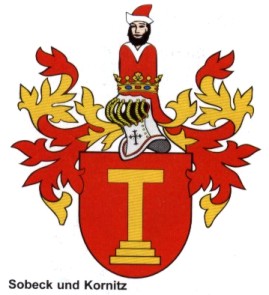
The family had Polish origins. The oldest mentions of their presence in the Upper Silesia come from the 14th and 16th century. The emperor Ferdinand II Habsburg bestowed upon all the members of the family the title of Bohemian Barons. It happened on 27 November 1635 and was renewed on 27 August 1637. Additionally, on 30 October 1637 he acknowledged them as Bohemian Lords.
In 1691, the Baron William Gottlieb, who came from that family, was the Head of the Mayoralty of Mysłowice, as well as the owner of Katowice, Bogucice and a part of Mysłowice. His position among the aristocrats in the Bytomian lands must have been prominent as he became the son-in-law to the State Lord of Bytom, the Count Gabriel Henckel von Donnersmarck. William Gottlieb was the Count's Daughter Eleonor’s second husband. The first one was the Baron William-Christian Rogendorf und Mollenburg, who died in 1685. William Gottlieb died in 1706, and Eleanor four years later. When William Gottlieb was still alive, his relative Charles Bernard became the owner of Katowice. In 1698, Charles Bernard sold this property for 21 thousand thalers to the entail-holder of Mysłowice, John Christopher Mieroszewski.
Descendants to the Baron Rudolph I (d. 1699) divided into two lines. The older, the Barons von Sobeck und Kornitz stemming from Rudolph II, settled mainly in Bohemia. It extinguished upon the Baron Victorin’s death in 1888. As the last representative of the line, Victorin adopted in 1880 his nephew, the Baron Charles von Skal, who from then used the surname Sobeck-Skal und Kornitz.
Rudolf’s II brother, Charles Henry I (from 1716 the Baron von Rauthen and the Count von Sobeck und Kornitz) was the founder of the second line – the Count line. Their main residence was the castle in Koszęcin. That line extinguished upon the Count John Charles’ II death in 1841.
Top 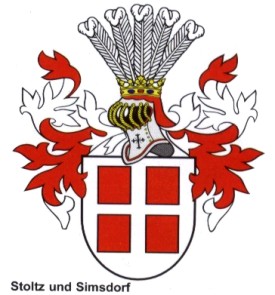
Noblemen from the Upper Silesia. The come for the town of Gostomia near Prudnik. Their second surname - Simsdorf – is the German name for their family residence. The last generations of the family were connected with the Bytomian lands. Here, their residence was the castle in Radzionków.
The first known representative of the family was Nico Stolcz, listed in a document from the first half of the 14th century. His descendants up to the half of the 16th century did not move outside Prudnik. Only in 1569, Sebastian Stoltz von Simsdorf, married to Catharine Schoff, bought the property of Pawłów near Racibórz. The relatives who followed him continued to buy other lands and properties.
In the Bytomian land, the first known representative of the family was John George, who was named as the Bytomian Land-Prefect already in documents from 1716. He owned also the lands placed near Pszczyna: Kopciowice, Zabrzeg, Ściernie and Poręba.
On 20 February 1719, John George was given the title of Bohemian Baron by the Bohemian King and the Emperor Charles VI Habsburg.
In Blaźek's armorial it is stated that John George had one son and one daughter. However, the Priest and Ph. D. Joseph Knosała, the authority on the history of Radzionków, claims that John George had two dons: John Adam and Adam. It is difficult to say where the truth lies.
The Baron’s John George’s children were the last generation of owners of the Castle in Radzionków. Anne Catherine married in 1701 the Count John Ernest Henckel von Donnersmarck from Bogumin. John Adam, though the elder brother, married only in 1719. His wife became Eleonor Charlotte from the Henckel family of Świerklaniec. Her father, the Count Charles Maximilian, and the Count Elias Andrew – John Ernest’s father – were cousins.
John Adam fought in the Emperor’s army in Spain, first as a Major, and then as a Colonel. He died in Trenczyn in Slovakia in the beginning of December 1703. His wife, the Countess Eleonor Charlotte, died in 1746 in Cieszyn. Anne Catharine Stoltz von Simsdorf, John Ernest’s wife, died probably as the last of the family one week before Christmas in 1754 in Bogumin.
Top 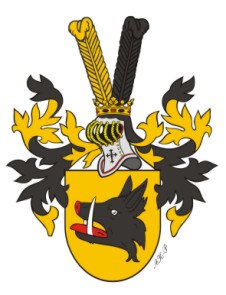
The family Strachwitz von Groß-Zauche und Camminetz is one of the oldest in Silesia. Their surname comes from the town of Strachowice in the Lower Silesia (it is nowadays a district in the city of Wrocław).
The first representative of the family - Wojsław of Strachowice – was mentioned in a document dated 1285. The family had to wait quite a long time for honours.
In 1630 in Ratisbon, the Emperor Ferdinand II Habsburg bestowed the title of the Baron of the Empire (Germ. Reichsfreiherr) upon brothers Christopher and Maximilian von Strachwitz und Groß-Zauche (Groß Zauche = Sucha Wielka in Polish). Christopher was an imperial counsellor, as well as prelate and canon in Wrocław.
Maximilian was a counsellor to the bishop of Wrocław. Both brothers died without male progeny. In the centuries that followed, other members of the family started to use the title of Baron. In the 18th century, the most famous were John Maurice and his relative Charles Joseph.
John Maurice was born in the winter 1721. When he was 27 years old, he was a canon in the chapter in Wrocław. In 1761, he received the titular bishopric of Tiberiade and he became a bishop-suffragan to the bishop of Wrocław Philip Gothard Schaffgotsch. Two years later he was named the general vicar. After Philips Gothard’s banishment to Austria in 1766, John Maurice became the apostolic vicar in the diocese of Wrocław (the part that remained within Prussian borders). He died in January 1781 in Wrocław.
The bishop’s younger relative, Charles Joseph, was a person equally well-known in the 18th century. He was born in March 1724. During the Silesian Wars, he supported the Prussian King Frederic II the Great. In the spring 1750, he bought the palace in Kamieniec with the surrounding grounds (nowadays, it is the municipality of Zbrosławice). Soon after that, he bought Księży Las and Ziemięcice. His main residence was the palace in Kamieniec, built in the beginning of the 18th century by a Löwenckron.
In 1798, Charles Joseph received from the King Frederic William III Hohenzollern the title of the Prussian Count of Kamieniec (Germ. Graf Strachwitz von Groß-Zauche und Camminetz). A year later, his title was acknowledged also by the Habsburgs. Other representatives of the Strachwitz family were not so lucky. Some of them even had a trouble with their titles being recognised in Prussia.
After Charles Joseph’s death, his sons divided the fortune. The elder, Ernest Joachim, became the owner of the state country of Wodzisław. He also owned Kamień Śląski with the castle and the surrounding grounds. Kamień Śląski remains connected with the family Odrowąż, Saint Jack, Blessed Czeslas and Bronislava. Kamieniec was the property of Charles Joseph’s younger son, Charles Mary.
- see in the section Gallery the pictures of places connected with the Strachwitz’s history : the castle Izbicko and Kamienień Śląski.
- see webpage of the Strachwitz family
- You can listen about Family Strachwitz on Radio Katowice
Top 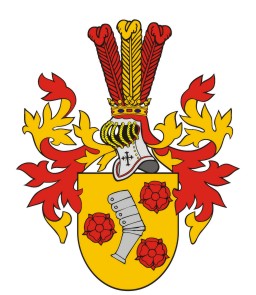
According to the family’s tradition, the dynasty von Tiele comes from the Westfall. In the 13th century, they were already among the members of the Teutonic Order in Prussia. The first known representative of the family was John Christian, whose son Christian Gottlob was a Court counselor at the Duke’s of Courland court, and then at the Russian Emperor’s court in Petersburg. He died during the Napoleonic Wars in 1811.
Christian Gottlob’s grandson Hubert married Valeska von Winckler and became the founder of the family von Tiele-Winckler (see below). His younger brother Valdemar continued the line von Tiele. His sons Günther and Helmut in 1905 received the hereditary title of Prussian Barons.
Helmut’s only son Sylvester died in January 1944 while lighting In the Second World War. Helmut died in 1965 as the last Baron von Tiele. His daughter Rosemary died on 23 December 1986 as the last representative of the family. She was her distant cousin Albrecht von Alvensleben’s wife. He died in 1990.
Top
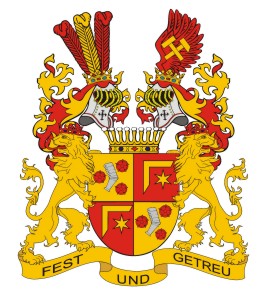
The founder of the family was Hubert von Tiele (see above), who through his marriage with Valeska von Winckler (see about Family von Winckler) took over her fortune. The Great Duke of Mecklenburg in 1854 consented to join their surnames and coats of arms. Valence died in 1880. Hubert then married the Countess Rose von den Schulenburg. From both marriages together he had ten children.
The Tiele-Winckler family significantly contributed to turning a small village that Katowice was in the beginning of the 19th century to a quickly developing city. Francis Winckler set up the administration of his vast property and appointed Frederick William Grundman as the supervisor. The latter one, together with his son-in-law, largely contributed to the growth of Katowice. The first prefect of Katowice was in the years 1872 – 1877 the Baron Hans von Berlepsch. In 1876, he married Hubert and Valance’s eldest daughter Francesca. The basis of the family’s fortune was industry. In 1889 Hubert established the Joint-Venture Company for Mining and Metalworks in Katowice. This company assimilated all the family’s industrial establishments.
|
The palace in Moszna |
After Hubert’s death, his fortune was divided among five sons. Francis Hubert received the property in the Upper Silesia, including Katowice, Miechowice and Moszna. Younger sons were given property in Mecklenburg. Walter received Blücher and Günther obtained Vollratsruhe. Hans-Werner was given the property of Rothenmoor. The youngest Raban settled down with mother in the Schorssow palace.
The eldest son, Francis Hubert, in 1895 received a hereditary title of Prussian Count. In 1905 all the descendants and the widow Rose received hereditary titles of Prussian Barons. Francis Hubert died after the First World War, in 1922. He lived up to see Katowice as the capital of the Silesian Voivodship. His son Claus Hubert died childless in 1938. Before death, he adopted his cousin, the Baron Hans Werner von Tiele-Winckler from Rothenmoor, who took over the Silesian Fortune and the title.
|
The Palace Schorrsow |
Francis Hubert’s younger brothers: the Baron Walter and the Baron Günther, died childless. Their property was taken over by their younger brothers. Hans Werner received Vollratsruhe, and Blücher was given to Raban. Hans Werner of Rothenmoor had three sons, out of which Hans Werner Junior inherited also the Upper-Silesian part of the fortune in 1938. All the property in Mecklenburg and the Upper Silesia was lost in 1945.
Hubert’s youngest son lived in Blücher, the name of which he changed into Lebbin, getting back to the source name. In the interwar period, he sold his property and left for Africa. He died on his way back in 1936, while traveling on a ship through the Suez Cannal. His African adventure was continued by his son Raab-Hubertus. That journey was interrupted by the outbreak of the Second World War. Raab Hubertus was deported by the English, from whom he escaped four times.
After the Second World War, the family settled in the Western Germany.
- see the description of the polish book and the german book about the family von Tiele-Winckler.
- see in the section Photobook the pictures from the meeting with the Baron von Tiele-Winckler and from the promotional event devoted to the book.
- see in the section Gallery the pictures of the Palace in Moszna.
Top 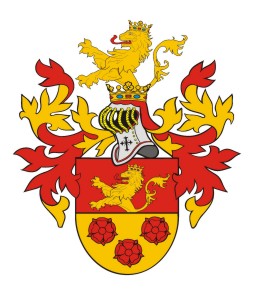
The family came from Spiš (the region that once belonged to the Hungarian Kingdom, and nowadays is the borderland of Poland and Slovakia), from the town of Betlanovce (Germ. Bethlensfalva, Bethlemsdorf). The Turzos had an identical coat of arms as the Henckel von Donnersmarck family (although the colours differ - see above). It may testify to the common origin of these two families, which was also confirmed by their spoken tradition.
They gained significance in the 15th century, when they settled in Lewocza and quickly enforced their position. By trading and banking activities, they obtained a large fortune. A few times they were members of municipal authorities. In 1503 Sigismund I Turzo became the Bishop of Nitra. Later he was the Bishop of Transylvania and Varadin.
At the turn of the 15th and 16th century, they got interested also in Poland. John Turzo (d. 1508) and his son George (d. 1521) received the municipal right of Cracow. In 1511 George became the Mayor of Cracow. Together with the Fuggers, the Turzos traded copper and ores, which brought them significant wealth.
|
The Castle of Spis |
Spare the Little Poland, they were also interested in Silesia. In 1506 George’s elder brother John (d. 1520) became the Bishop of Wrocław and the Duke of Nysa. By the contemporary he was called "the Polish Bishop". In Javorník, he finished building the Bishops’ Castle Jánský Vrch (germ. Johannesberg). The younger brother Stanislau (d. 1540) from 1496 was the Bishop of Olomouc. Their youngest brothers Alex (d. 1543) and John (d. 1558) were in the years 1517-1548 State-Lords of Pszczyna. Since 1525 they were Hereditary Zupans in the Comitat of Spiš.
The Mayor George was the founder of the Line of Spiš and Augsburg. Their main residences were the Castle of Spiš and the Castle Bojnice. In 1550, they received the title of Empire Barons. Stanislas III Turzo (d. 1625) became in 1622 the Palatine of Hungary, that is, the King’s Supreme Governor in Hungary. The king bestowed that office only upon his most trusted people.
Theophilus Turzo – the Mayor’s George uncle – was the founder of the line of Árva. The main residences of his descendants was the Castle of Árva und Bytča. Francis I (d. 1574) in 1543 became the Bishop of Nitra. After several years, he resigned from the office, converted to Protestantism and married. In 1556, he became a Hereditary Zupan in the Comitat of Árva. His son George V (d. 1616) in 1606 received the Count title. Three years later he obtained the highest office in the state – he became the Palatine.
His son Emeric died in 1621 as the last in line. His sisters turned the inherited property into a compossesorate, that is, a joint property inherited by all descendants. The last representative of the family was Michael Turzo, who came from the line of Spis and died in 1636.
|
The castle of Árva |
The Castle of Bojnice |
- see in the section Gallery the pictures presenting the Castel of Bishops of Wrocław in Janowa Góra (Jawornik).
- see the description of the book about the family Henckel von Donnersmarck and Turzo von Bethlenfalva.
- the family’s genealogy at the page: M. Marek, Genealogy.Eu .
Top 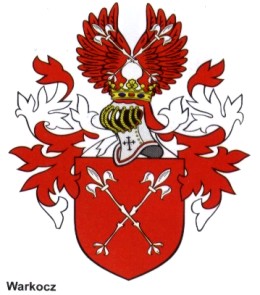
One of the oldest and most respected knightly family in Silesia. They come from the Lower Silesia, where there still is the town from which they derived their surname: Warkocz, located north from Strzelin, by the road to Wrocław.
The first representative known by name was Michael Warkocz, listed as a witness in a document from about 1280.
In the 16th century, the best known representatives were Nicolas, George and Thomas. The first one received in 1503 knightly rights from the Prince of Ziębice Charles I. The second one in 1540 served as a Colonel in Ferdinand I Habsburg’s army in the war with the Turks. Thomas was adopted by the Hungarian Count Pereny, the Empire Colonel and the Governor of Erlau. Since then, many of the Warkocz family received high offices in the army and in the court.
In Silesia the family divided into a few lines that settled in various regions, i.a., near Głogów, Ząbkowice, Opole, Milicz, Wrocław and Warkocz near Strzelin. From the line that lived near Brzeg came the Captain Charles Ferdinand, who on 12 January 1735 was given the title of Bohemian Baron. Six years later – when the Prussian King Frederick II the Great occupied Silesia – he received the title of Prussian Treasurer. Near Lubliniec he had the property of Ciasna, which he however quickly sold.
The Baron Charles Ferdinand’s relative, Adam bought in that time from John Kotuliński the property of Rybna near Tarnowskie Góry. The next owners were his relatives: Charles Sigfrid and Charles Anthony. The latter sold in 1783 a part of his land to the Count Reden, who built there the metalworks “Frederick’ (nowadays in the land of Strzybnica).
In 1791, upon Charles Anthony’s death, the property of Rybna was taken over by his wife Antonia Bujakowska, and later, through her relatives, by the family von Koschützki.
The Warkocz family of Rybna chose as their place of eternal rest the crypt in the Parish Church of St. Martin in Stare Tarnowice (Rybna belonged to that parish). This is the oldest temple in the region of Tarnowskie Góry.
- You can listen about Family von Warkotsch on webside of Radio Katowice (polish)
Top 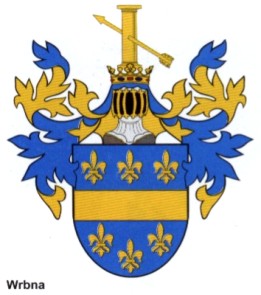
Lords from Wierzbno near Świdnica - de Wrbna – were known already in the 13th century. A representative of this family was most likely Henry of Wierzbno (d. 1319), the Bishop of Wrocław.
The first owner of Radzionków coming from this family was Dorothea about 1490. After her death, the village was first inherited by her son Nicolas, and then by her grandsons: John, Bartholomew and Stephen. Uncle Henry, who administered the property on behalf of the three brothers, sold the village in 1539/1540 to Adrian Hörnig.
After Stephen’s death (in 1567), the family divided into lines. From Albert stems the Silesian line that extinguished upon Charles Venceslaus’ death in 1757.
In Bohemia they reached important offices, e.g., John (d. 1593) was a Land Prefect in Opawa and Stephan (d. 1660) was an Empire General and Senior Treasurer of Moravia. Ferdinand Octavian (d. 1695) was a Land Prefect in the Duchy of Opole and Racibórz. Venceslaus Albert, who lived at the turn of the 17th and 18th century, was an Empire and Royal Secret Counselor and Treasurer, as well as a Land Prefect in the Duchy of Legnica. John Francis made a great career. He was the Supreme Judge of the Vassals’ Court, a Secret Counselor, a Governor, and finally the Supreme Chancellor of Bohemia. His namesake was later a Royal Counselor of the Chamber in Silesia.
The Land Prefect in the Principality of Opawa, John Stephen, together with his son Venceslaus de Wrbna received on 16 April 1642 the title of Imperial Counts from the Emperor Ferdinand III Habsburg.
The last representative of the family was the Count Alphonse. He was born in the beginning of 1896 in Vienna as the youngest son to the Count Rudolph of Holeszów, and Bavarian Princess Elvira (daughter to the Prince Adalbert Wittelsbach – the youngest son to the King of Bavaria Louis I and the Infant Amalie de Bourbon). During the Second World War, in the autumn 1944 he married in Munich Josephine Kallnberger, who was just a few months his junior. Until the end of the war they lived in the castle in Holeszów. After the war, they emigrated to Bohemia. They died in the fire that broke out in their apartment in Munich in 1976. Upon their death, the family of the Counts Wrbna extinguished.
- the family’s genealogy at the page: M. Marek, Genealogy.Eu
Top© All content is copyrighted.
Copying of texts is allowed only for didactic purposes,
provided that the source is quoted.